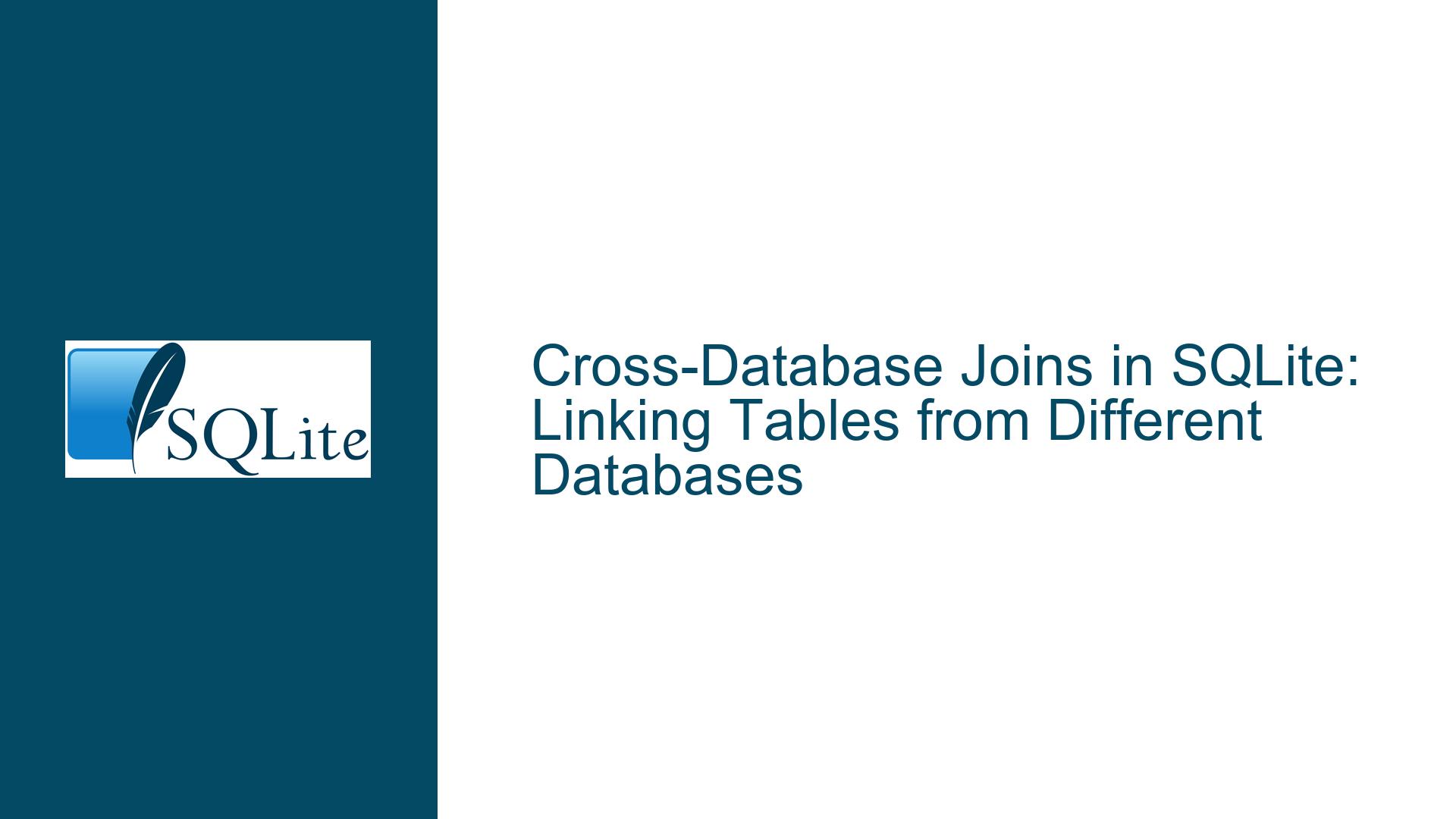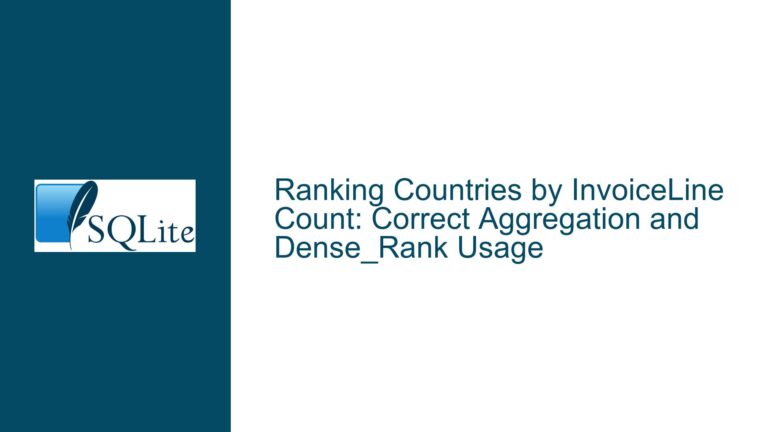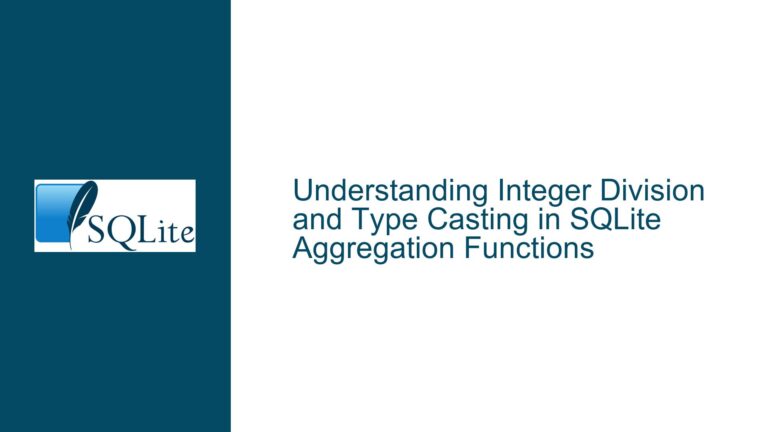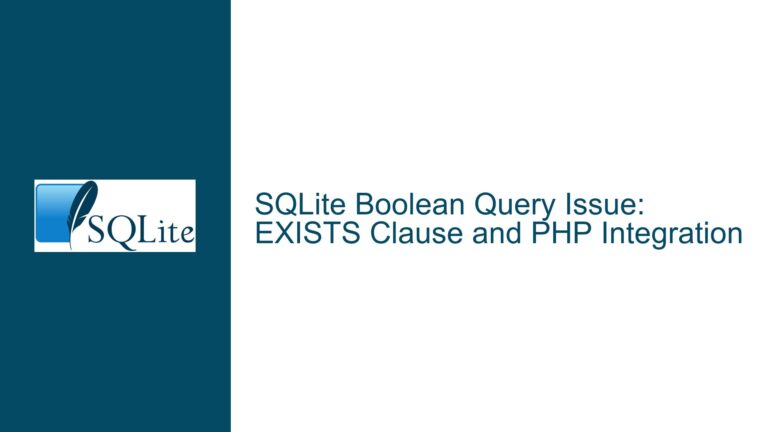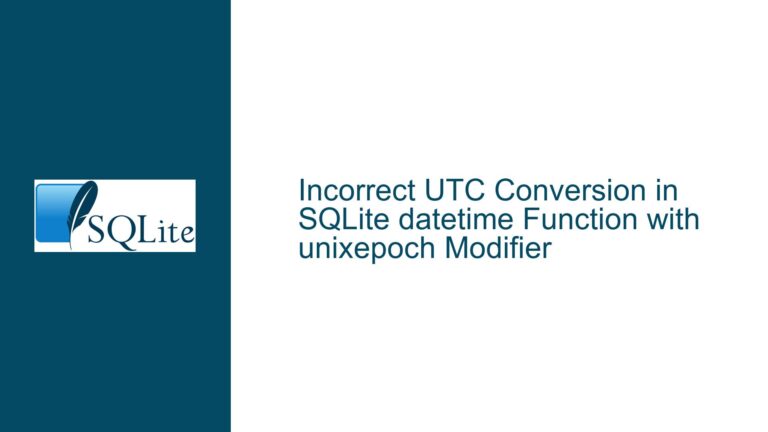Cross-Database Joins in SQLite: Linking Tables from Different Databases
Issue Overview: Joining Tables Across Multiple SQLite Databases
When working with SQLite, a common scenario involves querying data from tables that reside in different database files. This is particularly relevant in applications where data is logically separated into multiple databases but needs to be combined for reporting, analysis, or other operations. The core issue here revolves around performing a join operation between two tables, EN and MASTER, which are located in separate SQLite database files, DB1 and DB2, respectively. The goal is to retrieve records from the MASTER table where the status is not equal to 2, and the ID fields in both tables match. Additionally, the query must filter results based on user-provided values for the STATE and COUNTY fields in the EN table.
The challenge lies in the fact that SQLite, by default, does not allow direct joins across different database files. Each SQLite database operates in isolation unless explicitly instructed to interact with another database. This requires the use of the ATTACH DATABASE command to link the databases temporarily, enabling cross-database queries. The solution involves attaching one database to another, creating a unified environment where tables from both databases can be queried as if they were part of the same schema.
Possible Causes: Misconfigurations and Limitations in Cross-Database Operations
Several factors can complicate cross-database operations in SQLite. One primary cause is the lack of awareness or understanding of the ATTACH DATABASE command, which is essential for enabling cross-database queries. Without attaching the secondary database, any attempt to join tables from different databases will result in errors, as SQLite cannot locate the tables in the primary database’s schema.
Another potential issue is the incorrect specification of database paths during the attachment process. If the path to the secondary database is not correctly provided, SQLite will fail to attach the database, rendering the cross-database query impossible. This is particularly relevant when working with relative paths or when the databases are located in different directories.
Additionally, schema mismatches between the tables being joined can lead to unexpected results or errors. For instance, if the ID field in the EN table is of a different data type than the ID field in the MASTER table, the join operation may fail or produce incorrect results. Ensuring that the schemas of the involved tables are compatible is crucial for the success of cross-database queries.
Finally, performance considerations must be taken into account. Cross-database joins can be slower than joins within a single database, especially if the databases are large or if the join conditions are complex. Indexes play a critical role in optimizing such queries, and their absence can lead to significant performance degradation.
Troubleshooting Steps, Solutions & Fixes: Implementing Cross-Database Joins in SQLite
To successfully implement a cross-database join in SQLite, follow these detailed steps:
Attach the Secondary Database: The first step is to attach the secondary database (
DB2) to the primary database (DB1). This is done using theATTACH DATABASEcommand, which makes the tables in the secondary database accessible within the context of the primary database. The command syntax is as follows:ATTACH DATABASE 'path_to_DB2' AS DB2;Here,
path_to_DB2is the file path to theDB2database, andDB2is the alias under which the database will be referenced in subsequent queries.Verify Database Attachment: After attaching the database, it is essential to verify that the attachment was successful. This can be done by querying the
sqlite_mastertable of the attached database:SELECT name FROM DB2.sqlite_master WHERE type='table';This query should return the list of tables in the
DB2database, confirming that the attachment was successful.Construct the Join Query: With the secondary database attached, you can now construct the join query. The query should reference the tables using their fully qualified names, including the database alias. For example:
SELECT EN.id, EN.state, EN.county, MASTER.status FROM EN JOIN DB2.MASTER ON EN.id = MASTER.id WHERE EN.state = 'NY' AND EN.county = 'A' AND MASTER.status != 2;This query joins the
ENtable fromDB1with theMASTERtable fromDB2based on theIDfield, filtering the results based on theSTATE,COUNTY, andSTATUSfields.Optimize Query Performance: To ensure that the query performs efficiently, consider creating indexes on the fields used in the join and filter conditions. For example, creating an index on the
IDfield in both tables can significantly speed up the join operation:CREATE INDEX IF NOT EXISTS en_idx1 ON EN(id); CREATE INDEX IF NOT EXISTS master_idx1 ON DB2.MASTER(id);Additionally, indexes on the
STATEandCOUNTYfields in theENtable can improve the performance of the filter conditions.Handle Schema Mismatches: If the schemas of the
ENandMASTERtables are not compatible, you may need to modify the schema of one or both tables to ensure that the join operation works correctly. For example, if theIDfield in theENtable is of typeTEXTand theIDfield in theMASTERtable is of typeINTEGER, you may need to convert one of the fields to match the other:SELECT EN.id, EN.state, EN.county, MASTER.status FROM EN JOIN DB2.MASTER ON CAST(EN.id AS INTEGER) = MASTER.id WHERE EN.state = 'NY' AND EN.county = 'A' AND MASTER.status != 2;This query uses the
CASTfunction to convert theIDfield in theENtable to anINTEGER, ensuring compatibility with theIDfield in theMASTERtable.Detach the Secondary Database: Once the query has been executed, it is good practice to detach the secondary database to free up resources and avoid potential conflicts in future operations:
DETACH DATABASE DB2;This command removes the
DB2database from the current session, ensuring that it is no longer accessible.
By following these steps, you can successfully perform cross-database joins in SQLite, enabling you to combine data from multiple databases seamlessly. This approach is particularly useful in scenarios where data is distributed across different files but needs to be queried as a single dataset. With careful attention to schema compatibility, query optimization, and database attachment, you can overcome the limitations of SQLite’s default isolation and achieve your data integration goals.
